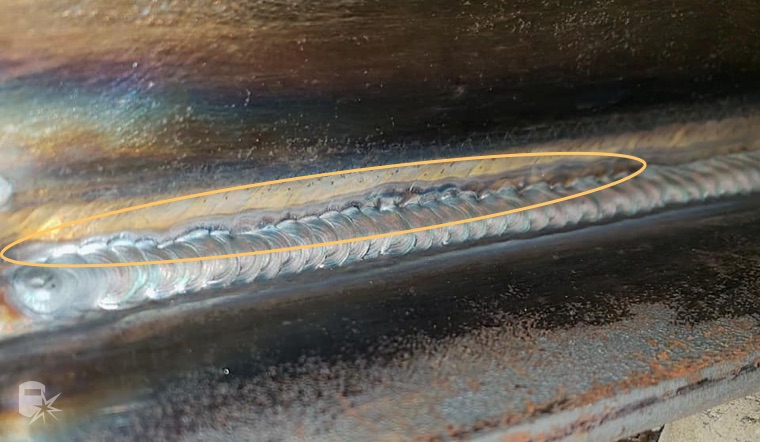Expert Techniques for Preventing Weld Undercut Successfully
Expert Techniques for Preventing Weld Undercut Successfully
Blog Article
Grasping the Art of Welding: Just How to Avoid Undercut Welding Issues for Flawless Construction Outcomes
By comprehending the origin triggers of undercut welding and applying reliable strategies to prevent it, welders can elevate their craft to new levels of excellence. In the quest of perfect manufacture outcomes, understanding the art of welding to stay clear of undercut concerns is not simply an ability however a necessity for those striving for perfection in their job.
Recognizing Undercut Welding

To stop undercut welding, welders ought to make certain appropriate welding parameters, such as adjusting the existing, voltage, traveling speed, and preserving the proper electrode angle. By understanding the causes of undercut welding and applying preventative actions, welders can achieve top notch, structurally sound welds.
Sources Of Undercut in Welding
Understanding the elements that add to damage in welding is important for welders to create top notch, structurally sound welds. When the weld metal does not correctly fill the groove formed in between the base metal and the formerly transferred weld steel, damaging takes place. A number of variables can bring about damage in welding. One typical cause is extreme warmth input. Welding at high temperature levels for prolonged periods can result in the base metal thawing even more than desired, resulting in damage. Poor welding inaccurate or current welding speed can likewise add to undercut. Inadequate current may not supply sufficient warmth to thaw the base and filler steels properly, while too much speed can stop correct fusion, creating undercut. In addition, incorrect electrode angles or wrong torch control techniques can produce locations of reduced weld metal deposition, promoting undercut. Recognizing these causes and carrying out correct welding strategies can aid avoid undercutting issues, making certain durable and strong welds.
Strategies to avoid Undercutting

To mitigate the danger of damaging in welding, welders can employ critical welding techniques targeted at improving the high quality and honesty of the weld joints. One reliable technique is to change the welding criteria, such as voltage, existing, and take a trip rate, to make certain correct warm input and deposition. Preserving an ideal electrode angle and guaranteeing regular travel speed can likewise help avoid undercut. Furthermore, utilizing the right welding strategy for the particular joint setup, such as weave or stringer grains, can add to minimizing damaging. Preventing weld undercut.
Using back-step welding methods and regulating the weld grain account check my reference can also aid disperse heat equally and decrease the risk of undercut. Routine examination of the weld joint throughout and after welding, as well as executing high quality guarantee actions, can help in detecting and resolving undercutting concerns quickly.
Significance of Proper Welding Parameters
Choosing and maintaining suitable welding specifications is necessary for achieving successful welds with minimal flaws. Welding parameters refer to variables such as voltage, current, take a trip rate, electrode angle, and protecting gas flow price that straight affect the welding process. These parameters have to be thoroughly find out here now adjusted based upon the kind of material being bonded, its thickness, and the welding method used.
Correct welding parameters ensure the correct amount of heat is applied to melt the base steels and filler product consistently. If the parameters are set too expensive, it can bring about extreme heat input, creating distortion, spatter, or burn-through. On the various other hand, if the criteria are as well low, incomplete blend, absence of penetration, or undercutting might take place.
Quality Control in Welding Operations

Final Thought
Finally, grasping the art of welding requires a comprehensive understanding of undercut welding, its causes, and strategies to stop it. By ensuring appropriate welding parameters and carrying out quality guarantee methods, flawless construction outcomes can be accomplished. It is essential for welders to consistently make every effort for quality in their welding operations to prevent undercut concerns and generate high-quality welds.
Undercut welding, an usual issue in welding procedures, occurs when the weld metal does not appropriately fill the groove and leaves a groove or depression along the welded joint.To prevent undercut welding, welders should make certain proper welding parameters, such as adjusting the current, voltage, travel rate, and maintaining the proper electrode angle. Poor welding present or wrong welding speed can additionally add to undercut.To reduce the danger of damaging in welding, welders can use tactical welding methods aimed at improving the top quality and integrity of the weld joints.In final thought, understanding the art of welding calls for an extensive understanding of undercut welding, its reasons, and strategies to prevent it.
Report this page